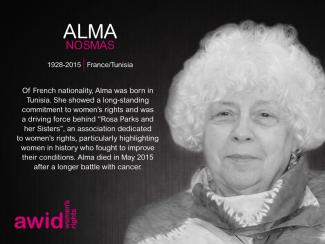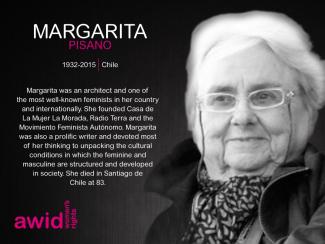
Margarita Pisano

Au cours des dernières années, nous avons observé une nouvelle tendance inquiétante dans les espaces internationaux consacrés aux droits humains. Les discours axés sur « la protection de la famille » sont en effet utilisés pour défendre des violations des droits de membres de la famille, pour renforcer et justifier l’impunité des auteurs de ces violations et pour restreindre l’égalité des droits au niveau de la vie familiale.
La campagne en faveur de la « Protection de la famille » est motivée par une volonté conservatrice d’imposer des conceptions « traditionnelles » et patriarcales de la famille et de priver les membres de la famille de leurs droits pour les transférer à « l’institution familiale ».
Depuis 2014, un groupe d’Etats travaille de front dans les espaces dédiés aux droits humains sous le nom de « Group of Friends of the Family » (Groupe des ami-e-s de la famille) ; des résolutions sur la « Protection de la famille » ont été adoptées chaque année depuis 2014.
Ce programme s’est propagé au-delà du Conseil des droits humains. Nous avons observé l’introduction d’un discours régressif autour de la « famille » à la Commission sur la condition de la femme, ainsi que des tentatives d’introduction dans les négociations sur les Objectifs de développement durable.
L’AWID travaille avec des partenaires et des allié-e-s pour s’opposer ensemble à la « Protection de la famille » et à d’autres programmes régressifs et défendre l’universalité des droits humains.
En réponse à l’influence croissante d’acteurs régressifs au sein des espaces dédiés aux droits humains, l’AWID a rejoint des allié-e-s afin de créer l’Observatoire sur l'Universalité des droits (OURs) (site en anglais). L’OURs est un projet de collaboration qui surveille, analyse et diffuse les informations concernant les initiatives anti-droits telles que la « Protection de la famille ».
Le premier rapport de l’OURs, Nos droits en danger, trace une cartographie des acteurs et actrices qui constituent le lobby mondial anti-droits et identifie leur réthorique et stratégies clés ainsi que leur impact sur les droits humains.
Le rapport précise que le programme de « Protection de la famille » a développé une collaboration entre un large éventail d’acteurs régressifs aux Nations Unies, qu’il décrit comme « un cadre stratégique abritant des positions anti-droits et patriarcales multiples, où le cadre vise entre autres à légitimer et institutionnaliser ces positions. »
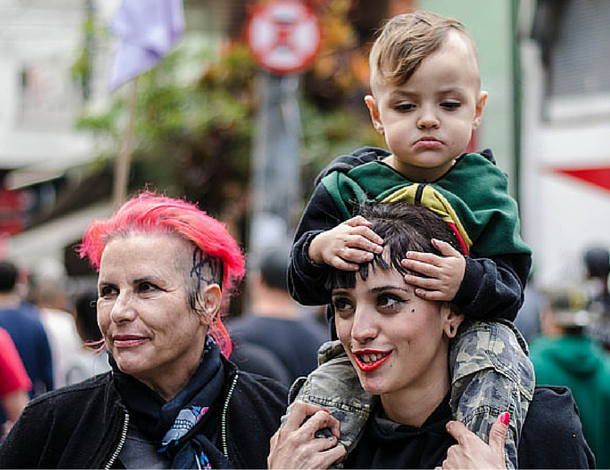
by Maryum Saifee
When you do a search for “Female Genital Mutilation” or “FGM” online, an image of four line-drawings of the female anatomy pop up next to its Wikipedia entry. (...)
artwork: “Dreams” by Neesa Sunar >

Laurie Carlos fue una actriz, directora, bailarina, dramaturga y poeta estadounidense, una artista y visionaria extraordinaria que tenía un poderoso don para hacer surgir el arte en otras personas.
«Laurie entraba en una habitación (cualquier habitación/todas las habitaciones ) con clarividencia arremolinada, con genio artístico, rigor corporizado, con un realismo feroz— y con la determinación de ser libre... y de liberar a otrxs. Una hacedora de magia. Una vidente. Alguien que cambiaba de formas. Laurie me dijo una vez que entraba en los cuerpos de las personas para descubrir qué necesitaban.» - Sharon Bridgforth
Combinaba estilos de actuación tales como gestos rítmicos y texto. Laurie era mentora de nuevxs actorxs, performers y escritorxs, y ayudaba a difundir su trabajo a través de «Naked Stages», una beca para artistas emergentes. Integraba el Penumbra Theater, con el que colaboraba mediante guiones que produjeran identificaciones, a fin de «traer más voces femeninas al teatro». Laurie integraba también Urban Bush Women, una compañía de danza contemporánea prestigiosa que relata historias sobre mujeres de la diáspora africana.
En 1976, como Lady in Blue, hizo su debut en Broadway, en la producción original galardonada del drama poético de Ntozake Shange For colored girls who have considered suicide / when the rainbow is enuf. La obra de Laurie incluye White Chocolate, The Cooking Show y Organdy Falsetto.
«Cuento las historias en el movimiento (las danzas internas que surgen espontáneamente, como en la vida), la música y el texto. Si escribo una línea, no necesariamente tiene que ser una línea que es hablada; puede ser una línea que es movida. Una línea a partir de la cual se crea música. El gesto se convierte en la oración. Gran parte de quienes somos como mujeres, como personas, tiene que ver con los gestos que hacemos entre nosotrxs todo el tiempo, y en particular, durante momentos emotivos. El gesto se convierte en una oración o una declaración de hechos. Si pongo en un guión “cuatro gestos”, eso no quiere decir que no estoy diciendo nada; significa que lo he abierto para que algo sea dicho físicamente.» - Laurie Carlos
Laurie nació y creció en la ciudad de Nueva York, trabajó y vivió en Twin Cities. Falleció el 29 de diciembre de 2016 a la edad de 67 años, luego de una batalla contra el cáncer de colon.
Tributos:
«Creo que esa era exactamente la intención de Laurie. Salvarnos. De la mediocridad. Del ego. De la pereza. De la producción de arte a medias. De estar paralizadxs por el miedo. Laurie quería ayudarnos a Brillar plenamente. En nuestra producción artística. En nuestras Vidas.» - Sharon Bridgforth para Pillsbury House Theatre
«Nadie que conociera a Laurie dejaría de definirla como una persona original. Era su propia persona. Era su propia persona, su propia artista; ponía en escena el mundo tal como lo conocía, con verdadero estilo y comprensión, y vivía su arte.» - Lou Bellamy, fundador de Penumbra Theater Company, para Star Tribune
Leer un tributo completo de Sharon Bridgforth (solo en ingles)

 |
Tshegofatso Senne est un·e féministe noir·e atteint·e d’une maladie chronique et genderqueer qui fait le maximum. Une grande partie de son travail est axée sur le plaisir, la communauté et le rêve et s’alimente de l’abolitionnisme somatique et du handicap, de la guérison et des justices transformatives. Tshegofatso écrit, fait des recherches et s’exprime sur des questions concernant le féminisme, la communauté, la justice sexuelle et reproductive, le consentement, la culture du viol et la justice, et élabore depuis 8 ans des théories sur la façon dont le plaisir recoupe ces différents thèmes. Tandis qu’iel dirige sa propre entreprise, Thembekile Stationery, sa plateforme communautaire Hedone rassemble les gens pour explorer et comprendre le pouvoir du plaisir et de la prise de conscience de traumatismes dans leur vie quotidienne. |
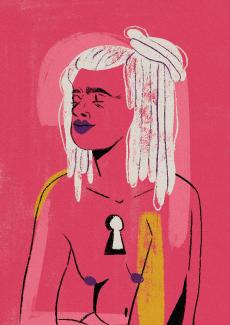
C’est dans notre corps, et non dans notre cerveau pensant, que nous expérimentons la plupart de nos douleurs, nos plaisirs, nos joies, et là où nous traitons la majeure partie de ce qui nous arrive. C’est également là que nous faisons la plupart de notre travail de guérison, et notamment notre guérison émotionnelle et psychologique. Et c’est là où nous faisons l’expérience de la résilience et d’une sorte de flux.
Ces mots, ceux de Resmaa Menakem dans son roman My Grandmother’s Hands résonnent toujours en moi
Le corps contient nos expériences. Nos mémoires. Notre résilience. Et comme l’a écrit Menakem, le corps contient également nos traumatismes. Il emploie des mécanismes spontanés de protection pour arrêter ou prévenir les dommages supplémentaires. Le pouvoir du corps. Le traumatisme, ce n’est pas l’événement, c’est la manière dont nos corps répondent aux événements qui nous semblent dangereux. Et le trauma reste souvent coincé dans notre corps, jusqu’à ce que nous l’abordions. Il n’est pas possible de faire autrement – c’est ainsi que notre corps l’entend.
En utilisant l’appli Digital Superpower de Ling Tan, j’ai observé les réactions de mon corps alors que je me promenais dans différents quartiers de ma ville, Johannesburg, en Afrique du Sud. L’appli est une plateforme en ligne pilotée par le mouvement qui permet de suivre nos perceptions pendant que l’on se déplace dans un lieu, en saisissant et en enregistrant les données. Je m’en suis servie pour faire le suivi de mes symptômes psychosomatiques – les réactions physiques connectées à une cause psychologique. Il pouvait s’agir de flash-backs. D’attaques de panique. De serrement de poitrine. L’accélération du rythme cardiaque. De maux de tête dus à la tension. De douleurs musculaires. D’insomnie. De difficulté à respirer. J’ai suivi ces symptômes tout en marchant et en me déplaçant dans différents coins de Johannesburg. Et je me suis demandé.e :
Où pouvons-nous être en sécurité? Peut-on être en sécurité?
Les réponses psychosomatiques peuvent avoir plusieurs causes, certaines moins sévères que d’autres. Lorsque l’on a vécu un traumatisme, on peut être dans une détresse très intense lors d’événements ou de situations similaires. J’ai fait le relevé de mes sensations, sur une échelle de 1 à 5, où 1 correspond aux cas où je n’ai ressenti presque aucun de ces symptômes – plutôt à l’aise que sur mes gardes et à fleur de peau, ma respiration et mon rythme cardiaque étaient stables, je ne regardais pas par-dessus mon épaule – et 5 à l’opposé : des symptômes qui me rapprochaient de l’attaque de panique.
En tant que personne noire. En tant que personne queer. En tant que personne de genre queer qui pouvait être perçue comme une femme, selon mon expression de genre ce jour-là.
Je me suis demandé.e :
Où pouvons-nous être en sécurité?
Même dans les quartiers que l’on pourrait considérer comme « sûrs », je me sentais constamment en panique. Je regardais autour de moi pour vérifier que je n’étais pas suivie, ajustant la manière dont mon T-shirt tombait pour que mes seins ne soient pas trop moulés, regardant autour de moi pour m’assurer que je connaissais plusieurs sorties, si je sentais tout à coup un danger là où j’étais. Une route sans personne fait monter l’anxiété. Une route bondée aussi. Prendre un Uber aussi. Marcher dans une rue publique également. Et être dans mon appartement aussi. Tout comme de récupérer une livraison au pied de mon immeuble.
Peut-on être en sécurité?
Pumla Dineo Gqola parle de l’usine de peurs féminines. Vous en avez peut-être une vague idée, mais si vous êtes une personne socialisée en tant que femme, vous connaîtrez très bien ce sentiment. Ce sentiment d’avoir à planifier chaque pas que vous faites, que vous vous rendiez au travail, à l’école, ou fassiez simplement une course. Ce sentiment d’avoir à surveiller la manière dont on s’habille, on parle, on s’exprime en public et dans les espaces privés. Ce sentiment au creux de l’estomac si on doit se déplacer la nuit, aller chercher une livraison, ou avoir affaire à toute personne qui continue à se socialiser en tant qu’homme cis. Harcelées dans la rue, toujours sous la menace de la violence. Exister pour nous, quel que soit l’espace, s’accompagne d’une peur innée.
La peur est un phénomène à la fois individuel et sociopolitique. Au niveau individuel, la peur peut faire partie d’un système d’avertissement sain qui se développe bien […] Lorsque l’on pense à la peur, il est important de prendre en compte à la fois les notions d’expérience émotive individuelle et les modalités politiques par lesquelles la peur a été utilisée à des fins de contrôle à diverses époques.
- Pumla Dineo Gqola, dans son ouvrage Rape: A South African Nightmare
En Afrique du Sud, les femmes cis, les femmes et les queers savent que chaque pas que nous faisons à l’extérieur – des pas pour faire des choses ordinaires comme se rendre dans un magasin, prendre un taxi jusqu’au travail, un Uber pour rentrer d’une fête – toutes ces actions sont une négociation avec la violence. Cette peur, elle fait partie du traumatisme. Pour s’adapter au traumatisme que l’on porte dans nos corps, nous élaborons des réponses à la détection du danger – on examine les réactions émotives des personnes autour de nous, à la recherche d’« amabilité ». Nous sommes constamment sur nos gardes.
Jour après jour. Année après année. Vie après vie. Génération après génération.
L’auteur de The Body Keeps the Score, Bessel van der Kolk, explique à propos de la difficulté supplémentaire que pose ce système de défense acquis, que
Elle perturbe la capacité à correctement lire les autres, ce qui rend les survivant·e·s de traumatisme moins à même de détecter le danger, ou plus à même de croire avoir perçu un danger là où il n’y en a pas. Il faut une énergie considérable pour continuer à fonctionner tout en portant la mémoire de la terreur, et la honte d’une faiblesse et d’une vulnérabilité infinie.
Comme le dit Resmaa Menakem, le traumatisme est partout; il s’infiltre dans l’air que nous respirons, l’eau que nous buvons, la nourriture que nous ingérons. Il est présent dans les systèmes qui nous gouvernent, l’institution qui nous enseigne et qui nous traumatise aussi, et au sein des contrats sociaux que nous concluons les un·e·s avec les autres. Plus important encore, nous prenons le traumatisme avec nous partout où nous allons, dans nos corps, nous épuisant et sapant notre santé et notre bonheur. Nous portons cette vérité dans nos corps. Des générations d’entre nous l’ont fait.
Alors, pendant que je marche dans ma ville, que ce soit dans un quartier considéré « sûr » ou non, je porte les traumatismes de générations dont les réactions sont intégrées dans mon corps. Mon cœur palpite, je commence à avoir du mal à respirer, ma poitrine se resserre – parce que mon corps a l’impression que le traumatisme a lieu exactement à ce moment-là. Je vis avec une hypervigilance. Au point où l’on est soit trop sur ses gardes pour profiter de la vie sans souci, soit trop engourdi·e pour absorber de nouvelles expériences.
Pour que nous commencions à guérir, nous devons reconnaître cette vérité.
Ces vérités qui vivent dans nos corps.
Ce traumatisme est ce qui empêche nombre d’entre nous de vivre les vies que nous voulons. Demandez à n’importe quelle femme ou personne queer à quoi ressemble la sécurité pour elle, et elle vous donnera principalement des exemples de tâches très simples – pouvoir simplement vivre une vie joyeuse, sans la menace constante de la violence.
Les sentiments de sécurité, de confort et d’aise sont spatiaux. Incarner nos traumatismes influence la manière dont nous percevons notre propre sécurité, affecte les manières dont nous interagissons avec le monde et modifie les possibilités pour nous de vivre et d’incarner toute chose plaisante ou joyeuse.
Nous devons refuser cette encombrante responsabilité et nous battre pour un monde sûr pour nous toutes et tous. Nous, qui nous déplaçons avec nos blessures, sommes des battantes. Le patriarcat peut nous terroriser et nous brutaliser, nous ne cesserons pas le combat. Alors que nous continuons à descendre dans la rue, en défiant la peur de manière spectaculaire et apparemment insignifiante, nous nous défendons et parlons en notre propre nom.
- Pumla Dineo Gqola, dans son ouvrage Rape: A South African Nightmare
Où pouvons-nous être en sécurité? Comment commencer à se défendre, pas simplement physiquement mais également émotionnellement, psychologiquement et spirituellement?
« Le traumatisme nous transforme en armes » déclarait Adrienne Maree Brown dans un entretien mené par Justin Scott Campbell. Et son ouvrage, Pleasure Activism, propose plusieurs méthodes pour guérir ce traumatisme et nous ancrer dans la compréhension que la guérison, la justice et la libération peuvent également être des expériences plaisantes. Et particulièrement pour celles d’entre nous qui sont les plus marginalisées, qui ont peut-être été éduquées à faire rimer souffrance avec « ce travail ». Ce travail que tant d’entre nous ont entamé en tant qu’activistes, bâtisseuses communautaires et travailleuses, celles qui sont au service des plus marginalisées, ce travail que nous souffrons à réaliser, nous épuisant et ne prenant que rarement soin de nos esprits et de nos corps. L’alternative est d’être mieux informées à propos de nos traumatismes, capables d’identifier nos propres besoins et de devenir profondément incarnées. Cette incarnation signifie que nous sommes tout simplement plus à même de faire l’expérience du monde à travers les sens et les sensations de notre corps, en reconnaissant ce qu’ils nous disent plutôt qu’en supprimant et en ignorant l’information qu’ils nous communiquent.
Être en conversation continue avec notre corps vivant et pratiquer ces conversations avec intention nous connecte plus profondément à l’incarnation. Cela nous permet de rendre tangibles les émotions que nous ressentons lorsque nous interagissons avec le monde, que nous apprenons à apprivoiser notre corps et que nous comprenons tout ce qu’il essaie de nous enseigner. En comprenant le traumatisme et l’incarnation de pair, nous pouvons commencer à débuter la guérison et à accéder au plaisir de manière plus holistique, sainement et dans notre vie de tous les jours sans honte ou culpabilité. Nous pouvons commencer à accéder au plaisir en tant qu’outil de changement individuel et social, en puisant dans le pouvoir de l’érotique, comme le décrivait Audre Lorde. Un pouvoir qui nous permet de partager la joie à laquelle nous accédons et dont nous faisons l’expérience, élargissant notre capacité à être heureuses et à comprendre que nous le méritons, même avec notre traumatisme.
Puiser dans le plaisir et incarner l’érotique nous gratifie de la possibilité d’être délibérément vivantes, de nous sentir ancrées et stables et de comprendre notre système nerveux. Cela nous permet de comprendre et de nous défaire des bagages générationnels que nous portions sans le réaliser; nous pouvons acquérir du pouvoir grâce à la connaissance que même aussi traumatisées que nous le sommes, aussi traumatisées que nous pourrions potentiellement l’être à l’avenir, nous méritons tout de même des vies plaisantes et joyeuses, et que nous pouvons partager ce pouvoir avec nos gens. C’est l’aspect communautaire qui manque aux manières dont nous prenons soin de nous-mêmes; l’autosoin ne peut exister sans soin communautaire. Nous sommes en mesure de sentir une confiance interne plus profonde, une sécurité et un pouvoir en nous-mêmes, particulièrement face à des traumatismes ultérieurs qui déclencheraient des réactions en nous, car nous savons comment nous apaiser et nous stabiliser. Toute cette compréhension nous mène à un pouvoir interne profond et nourri, qui nous permet de relever tous les défis qui se présentent à nous.
Comme celles qui vivent avec des traumatismes générationnels profonds, nous en sommes venues à perdre confiance, voire à penser que nous sommes incapables de contenir et d’accéder au pouvoir que nous avons. Dans « Uses of the Erotic: The Erotic as Power », Lorde nous enseigne que l’érotique offre une source de régénération, une manière d’exiger mieux pour nous-mêmes et pour nos vies.
Car l’érotique n’est pas simplement une question de ce que nous faisons; c’est de savoir dans quelle mesure nous pouvons précisément et entièrement ressentir le faire. Dès lors que nous connaissons la mesure dans laquelle nous sommes capables de ressentir ce sens de satisfaction et de complétude, nous pouvons alors observer quelle activité dans notre vie nous rapproche le plus de cette complétude.
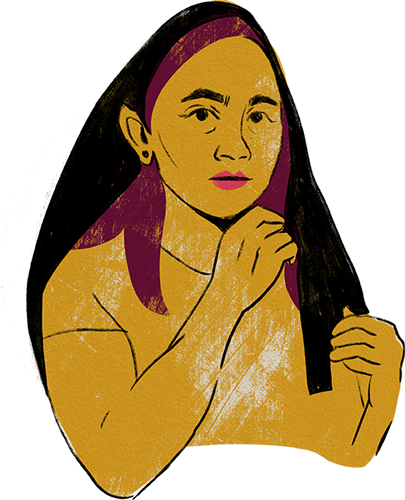
Je ne dis rien de tout ça à la légère – je sais que c’est plus facile à dire qu’à faire. Je sais que nombre d’entre nous sont empêchées de comprendre ces réalités, de les internaliser, voire de les guérir. La résistance s’accompagne d’actes où l’on se sent en insécurité, mais elle n’est pas impossible. Résister à des structures de pouvoir qui maintiennent les plus puissants en sécurité mettra toujours en danger celles d’entre nous qui sont poussées dans la marge. Reconnaître les traumatismes que vous avez affrontés, c’est réclamer vos expériences vécues, celles qui sont passées et celles qui suivront; c’est la résistance qui incarne cette connaissance que nous méritons, plutôt que les miettes que ces systèmes nous ont obligées à avaler. C’est une résistance qui comprend que le plaisir est compliqué par le traumatisme, mais que l’on peut y accéder de manière arbitraire et puissante. C’est une résistance qui reconnaît que notre traumatisme est une ressource qui nous connecte les unes aux autres et qui peut nous permettre de nous sentir mutuellement en sécurité. C’est une résistance qui comprend que même avec le plaisir et la joie, ce n’est pas une utopie; nous blesserons encore et serons de nouveau blessées, mais nous serons mieux outillées pour survivre et nous épanouir dans une communauté de soins et de gentillesse diversifiés. Une résistance qui fait de la place à la guérison et à la connexion à notre être humain en entier. La guérison ne sera jamais une balade agréable, mais elle commence avec la reconnaissance de la possibilité. Lorsque l’oppression nous fait croire que le plaisir est quelque chose auquel tout le monde a un accès égal, une des manières par lesquelles nous commençons à faire le travail de réclamation de nos êtres entiers – nos êtres entiers libérés et libres – est de réclamer notre accès au plaisir.
Leah Lakshmi Piepzna-Samarasinha a écrit dans sa contribution à Pleasure Activism,
Je sais que, pour la plupart des gens, les mots « soins » et « plaisir » ne peuvent absolument pas faire partie d’une même phrase. Nous nageons toutes dans la haine validiste de nos corps qui ont des besoins, et on nous propose un choix vraiment merdique : n’avoir aucun besoin et obtenir l’autonomie, la dignité et le contrôle de notre vie ou admettre que nous avons besoin de soins et perdre tout cela.
Le pouvoir que cela a? Nous comprenons nos traumatismes, donc nous comprenons ceux des autres; nous incarnons les sensations que nous vivons et y prêtons attention plutôt que de les négliger ou les éviter. Les manières dont nous accédons au plaisir nous donnent envie de partager cette joie dans nos communautés. En tenant compte des traumatismes, on se donne davantage de place pour faire l’expérience de tout cela et on se donne à nous-mêmes, et aux autres, la permission de guérir. Imaginez une communauté dans laquelle tout le monde a accès à des ressources et a le temps de vivre une vie plaisante, de la manière dont toutes et tous le veulent et le méritent. Dans laquelle les traumatismes spatiaux sont atténués parce que les personnes qui occupent ces espaces ont conscience des traumatismes, sont pleines d’attention bienveillante. N’est-ce pas ça, la guérison? N’est-ce pas un travail au niveau des traumatismes générationnels? N’est-ce pas la base pour un avenir plus sain et durable pour tout le monde?
Il est temps de nous reconnecter à cette sagesse ancestrale selon laquelle nous méritons de vivre des vies pleines. Nous devons reprendre contact avec notre droit naturel à la joie et à l’existence pour nous-mêmes. De ressentir du plaisir pour le simple plaisir. De ne pas vivre des vies de terreur. Cela paraît radical ; cela semble radical. Dans un monde où nous avons été socialisées et traumatisées à taire, à avoir peur, à ressentir et à rester impuissantes, à être cupides et à vivre avec ces problèmes structurels qui entraînent des maladies mentales, quel cadeau et quel émerveillement que de commencer à ressentir, d’être dans une communauté avec celles qui ressentent, dans laquelle nous sommes sainement interdépendantes, de s’aimer mutuellement et complètement. La sensation est radicale. Le plaisir est radical. La guérison est radicale.
Vous avez la permission de ressentir du plaisir. Vous avez la permission de danser, créer, faire l’amour à vous-même et à d’autres, célébrer et cultiver la joie. Vous êtes encouragées à le faire. Vous avez la permission de guérir. Ne le retenez pas à l’intérieur, n’essayez pas de traverser cela toute seule. Vous avez la permission de faire le deuil. Et vous avez la permission de vivre.
- Adrienne Marre Brown « You Have Permission »
L’incarnation somatique nous permet d’explorer notre traumatisme, d’y travailler et de faire des connexions significatives avec nous-mêmes et avec le collectif. Faire cela sur la durée entretient notre guérison. Tout comme le traumatisme, la guérison n’est pas un événement à occurrence unique. Cette guérison nous aide à aller vers la libération individuelle et collective.
Dans « A Queer Politics of Pleasure », Andy Johnson parle de la manière dont le fait de rendre le plaisir queer nous apporte des sources de guérison, d’acceptation, de relâchement, de jeu, d’entièreté, de défiance, de subversion et de liberté. Quelle ouverture! En incarnant le plaisir de manière si holistique, si queer, nous sommes en mesure de reconnaître la limite.
Rendre le plaisir queer nous pose également les questions à l’intersection de nos rêves et de nos réalités vécues.
Qui est assez libre ou considéré assez méritant pour ressentir du plaisir? Quand sommes-nous autorisés à ressentir le plaisir ou à être satisfaits? Avec qui pouvons-nous faire l’expérience du plaisir? Quel type de plaisir est accessible? Qu’est-ce qui nous limite dans notre accès total à notre potentiel érotique et de satisfaction?
- Andy Johnson, « A Queer Politics of Pleasure »
Lorsque nos pratiques de plaisir, qui prennent en compte le traumatisme, sont ancrées dans les soins communautaires, nous commençons à répondre à quelques-unes de ces questions. Nous commençons à en comprendre le potentiel libérateur. En tant qu’activistes du plaisir, c’est la réalité au sein de laquelle nous nous ancrons. La réalité qui dit : « mon plaisir peut-être fractal, mais il a le potentiel de guérir non seulement moi et ma communauté, mais des lignées futures ».
Je suis un système entier; nous sommes des systèmes entiers. Nous ne sommes pas que nos douleurs, que nos peurs, et que nos pensées. Nous sommes des systèmes entiers prévus pour le plaisir et nous pouvons apprendre comment dire oui depuis l’intérieur.
- Prentis Hemphill, entretien mené par Shar Jossell
Il y a un monde de plaisir qui nous permet de commencer à nous comprendre de manière holistique, avec des façons qui nous donnent la place de reconstruire les réalités qui affirment que nous sommes capables et que nous méritons du plaisir quotidien. Le BDSM, un de mes plaisirs les plus profonds, me permet d’entrevoir ces réalités où je peux sentir et guérir mon traumatisme, tout en sentant les incommensurables possibilités de dire oui depuis l’intérieur. Alors que le traumatisme me bloque dans un cycle de combat ou de fuite, le bondage, l’agenouillement, l’impact et les jeux de respiration m’encouragent à rester ancrée et connectée, me reconnectant à ma restauration. Le plaisir ludique me permet de guérir, d’identifier où l’énergie traumatique est emmagasinée dans mon corps et d’y centrer mon énergie. Il me permet d’exprimer les sensations que ressent mon corps avec des cris de douleur et de satisfaction, d’exprimer mon « non » sans aucune peur et de me délecter dans le « oui, carrément ». Avec un plan de sécurité, des soins après la pratique et une compréhension approfondie du traumatisme, la perversion offre un lieu de plaisir et de guérison d’une valeur inestimable.
Donc, que votre plaisir prenne la forme de la préparation d’un repas à votre rythme, d’avoir des relations sexuelles, de rester au lit plusieurs jours avec vos partenaires, de participer à des collectifs de soins adaptés aux situations de handicap, d’avoir quelqu’un qui vous crache dans la bouche, de faire des sorties accessibles, d’avoir des rendez-vous de câlins, de participer à une soirée dansante en ligne, de passer du temps dans votre jardin, d’être étouffée dans un donjon,
J’espère que vous prenez le plaisir avec vous partout où vous allez. J’espère qu’il vous guérit, vous et celleux qui vous entourent.
Reconnaître le pouvoir de l’érotique au sein de nos vies peut nous donner l’énergie de poursuivre le véritable changement au sein de notre monde.
- Audre Lorde, « Uses of the Erotic: The Erotic as Power »

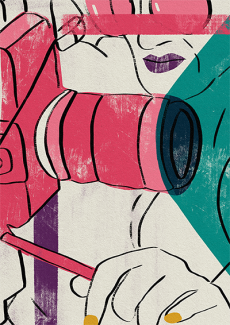
Cette édition du journal, en partenariat avec Kohl : a Journal for Body and Gender Research (Kohl : une revue pour la recherche sur le corps et le genre) explorera les solutions, propositions et réalités féministes afin de transformer notre monde actuel, nos corps et nos sexualités.

نصدر النسخة هذه من المجلة بالشراكة مع «كحل: مجلة لأبحاث الجسد والجندر»، وسنستكشف عبرها الحلول والاقتراحات وأنواع الواقع النسوية لتغيير عالمنا الحالي وكذلك أجسادنا وجنسانياتنا.
Queremos agradecer al colectivo Amar.ela de mujeres feministas activistas y creativas que hicieron posible esta serie, y especialmente a Natalia Mallo (el pulpo del equipo) por su apoyo y acompañamiento en este viaje.
También extendemos nuestro más profundo agradecimiento y admiración a todos los colectivos y personas que participaron en este proyecto, y les agradecemos por compartir su tiempo, sabiduría, sueños e ilusiones con nosotrxs. Les agradecemos por hacer de este mundo un mundo más justo, feminista y sostenible.
Esperamos que sus historias inspiren al resto del mundo tanto como nos inspiran a nosotrxs.
por Émilie Herbert-Pontonnier
¿Se acuerdan de Esmeralda? La exótica heroína «gitana» nacida de la pluma del gigante literario francés, Víctor Hugo, y popularizada por los Estudios Disney con su Jorobado de Notre Dame. (...)
< arte: «Si las marronas lo permiten», Nayare Soledad Otorongx Montes Gavilan
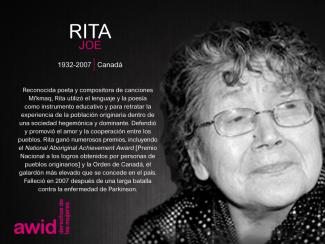
Fadila M. était une activiste “tribale” Soulaliyate d’Azrou, dans la province marocaine d’Ifrane. Elle s'est battue contre une forme spécifique de discrimination à l'égard des femmes “tribales” liée à la propriété foncière.
Dans le cadre du Mouvement en faveur des droits fonciers des femmes Soulaliyates, elle a travaillé pour la révision de la législation-cadre relative à la gestion des biens communautaires, avec l'adoption en 2019 de trois projets de lois garantissant l'égalité des femmes et des hommes.
Selon le droit coutumier en vigueur, les femmes n'avaient pas le droit de bénéficier de la terre, surtout celles qui étaient célibataires, veuves ou divorcées. Au Maroc, les droits à la terre collective se transmettaient traditionnellement entre les membres masculins de plus de 16 ans issus d’une même famille. Depuis 2007, Fadila M. faisait partie du mouvement des femmes, à savoir la première mobilisation populaire nationale de revendication de leurs droits fonciers. Parmi leurs victoires, citons le fait qu'en 2012, les femmes Soulaliyates ont pu, pour la première fois, s'inscrire sur les listes de bénéficiaires et disposer d'une indemnisation liée à la cession des terres. Le mouvement a également réussi à faire modifier le dahir de 1919 (décret du roi du Maroc) de façon à garantir aux femmes le droit à l'égalité.
Fadila M. s’est éteinte le 27 septembre 2018. Les circonstances de sa mort, survenue alors qu’elle participait à une marche de protestation sur la question des terres collectives, ne sont pas claires. Si les autorités déclarent que sa mort est accidentelle et qu'elle a fait un arrêt cardiaque sur le chemin de l'hôpital, la section locale de l'Association marocaine des droits de l'homme (AMDH), affirme quant à elle que Fadila a été étouffée par un membre des forces policières arborant un drapeau marocain. Sa famille a demandé qu’une enquête soit menée mais les résultats de l'autopsie n'ont pas été communiqués.
Apprenez-en davantage sur le Mouvement en faveur des droits fonciers des femmes Soulaliyates
Veuillez noter: Nous n'avons pu trouver aucune photo de Fadima M. C'est pourquoi cette illustration (au lieu d'un portrait) représente ce pour quoi elle s'est battue et a travaillé : la terre et le droit d'y vivre et d'avoir accès à cette terre et ce qui y pousse.
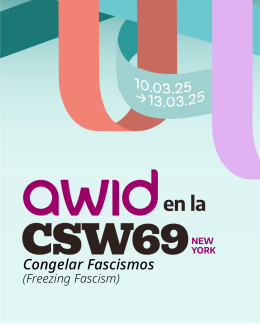
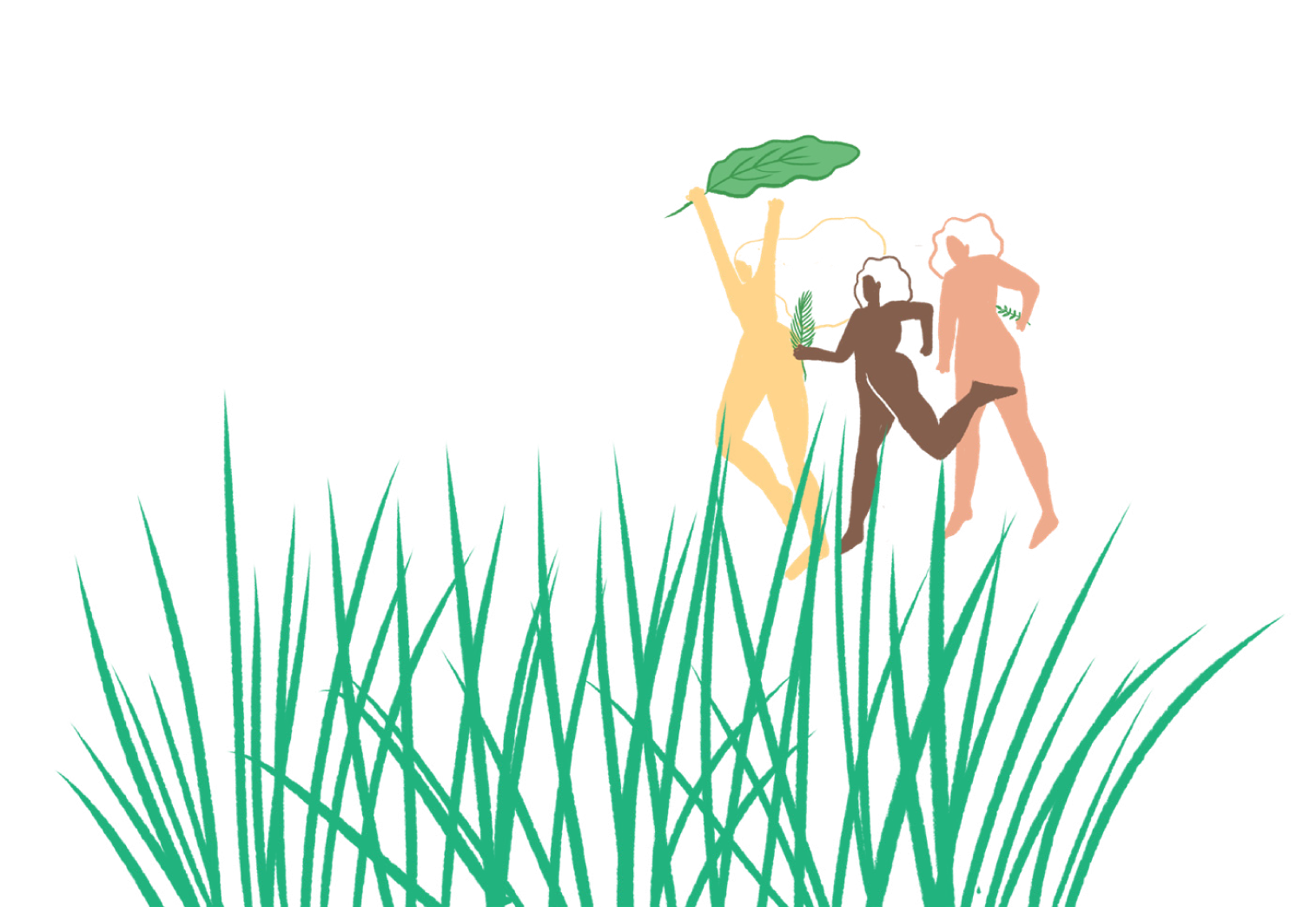
L’année 2022 marque les 40 ans de la fondation de AWID. Nous profitons de ce moment pour nous pencher sur les années passées et apprendre du chemin parcouru, tout en nous préparant à l’avenir et au travail qui nous attend. À mesure de notre progression entre les cycles de progrès et de repli , nous avons appris que les luttes pour les droits des femmes et la justice de genre sont itératives et non linéaires. En collaboration avec l'artiste Naadira Patel, nous avons créé un album qui met en lumière une sélection de moments marquants, représentatifs des quatre décennies de soutien de AWID aux mouvements féministes.
Nous n’avons pas fait tout cela toutes seules. Nous vous faisons part de cela avec une profonde reconnaissance envers la myriade d’activistes et de groupes féministes qui ont rendu ce travail possible. Dans ce contexte de si nombreuses crises convergentes, nous accueillons l’occasion de célébrer le pouvoir et la résilience des mouvements féministes autour du monde…
Vous pouvez ouvrir en plein écran si vous le souhaitez.
Télécharger l'album ici
par Siufung Law
« 97...! 98…! Où est 98? 98! Veuillez revenir dans la queue!... 99! 100...! » La gérante des coulisses a demandé sans relâche à chaque athlète de faire la queue dans les coulisses humides, en sueur et surpeuplées. (...)
< illustration : « Quand iels nous verront », par Lame Dilotsotlhe
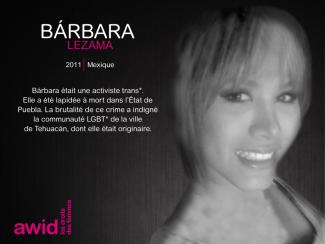
“I didn’t plan to be a singer, singing planned to be in me.” - Dorothy Masuka (interview with Mail & Guardian)
One such song titled “Dr. Malan” (named after the pro-apartheid politician D.F. Malan) was banned. She went on to record “Lumumba” (1961), a song about the assassination of the anti-colonial leader Patrice Lumumba. Dorothy’s work and activism attracted the attention of the Special Branch of the South African police and she was forced into a political exile that would span over three decades. Throughout this time, she worked with pro-independence groups including the African National Congress. In 1992, as apartheid started to crumble and Nelson Mandela was released from prison, she returned to South Africa.
Some of her other work includes the first song she recorded in 1953 entitled “Hamba Notsokolo”, a hit in the 1950s and a valued classic. She also wrote “El Yow Phata Phata”, a song that was adapted by Miriam Makeba, making “Pata, Pata” popular internationally.
Rooted in resistance, Dorothy’s music and activism were intertwined, leaving a magnificent and inspiring legacy. She was also widely known as “Auntie Dot”.
On 23 February 2019 at the age of 83, Dorothy passed away in Johannesburg due to ill health.
Watch Dorothy Masuka in an interview with Mail & Guardian
Listen to some of her music:
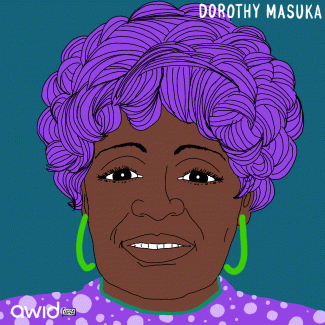
✉️ Inscripción presencial cerrada. Regístrate para la transmisión en vivo aquí
Evento en inglés
📅 Miércoles 12 de marzo de 2025
🕒 De 12:00 a 01:30 pm, EST
🏢 PNUD, 304 E 45th St. Doha Room, 11th Floor (FF Building)
Organizan: PNUD, Femena, SRI y AWID
Dear Feminist Movements,
On behalf of the AWID Board of Directors, I am proud to introduce AWID’s next Co-Executive Directors: Faye Macheke and Inna Michaeli!
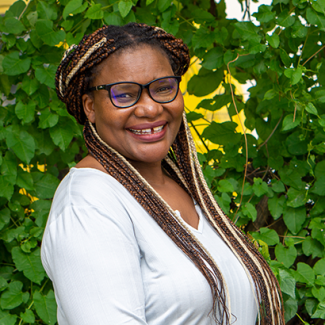 |
Faye Macheke is a passionate Pan-African feminist, active in movements for women's rights, racial justice, migrant and labor rights, and environmental justice. Her activism builds on the legacy of the struggle against apartheid in South Africa and the aftermath of the apartheid era in Zimbabwe. In 2019, Faye joined AWID as the Director of Finance, Operations and Development. She brings extensive experience in feminist leadership, strategy, and all aspects of organisational development. Faye is a committed Board Member of UAF-Africa and other women's rights organizations. She is based in Cape Town, South Africa. |
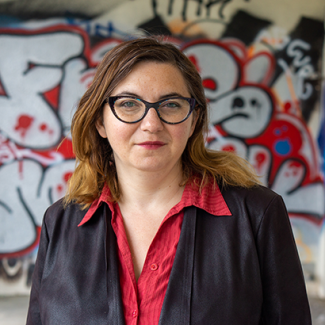 |
Inna Michaeli is a feminist lesbian queer activist and sociologist with many years of deep engagement in feminist and LGBTQI+ struggles, political education and organizing by and for migrant women, and Palestine liberation and solidarity. Inna joined AWID in 2016 and served in different roles, most recently as the Director of Programs. She brings extensive experience in research and knowledge building, policy advocacy and organizational development. Inna serves on the Board of the Jewish Voice for Peace - Germany. She is based in Berlin, Germany. |
This decision is the result of a rigorous process with full participation of the Board and the staff of AWID. The Board recognised and honoured the skills and talents of AWID staff by opening an internal hiring search. As a result, we had two brilliant candidates, who embody the integrity, ethic of care, and feminist intersectional values that drive AWID’s work, apply together as a team. Faye and Inna brought forward a brave and exciting vision to meet the challenges of this moment: building a global feminist community, resisting and disrupting systems of oppression, and supporting feminist movements to thrive.
As AWID celebrates 40 years we are excited for Inna and Faye to co-lead AWID into our next strategy and a new phase of evolving, pushing boundaries, and supporting feminist movements worldwide.
Appointing and supporting AWID’s Co-Executive Directors to lead the organisation is a fiduciary responsibility we take seriously as a Board. How we engage those processes is also a reflection of AWID’s brilliant and diverse membership, which elects AWID’s Board.
As we say good-bye to Cindy and Hakima, we, the Board, unanimously and enthusiastically welcome Faye and Inna as our next Co-EDs as of September 5, 2022. Stay tuned for more updates about our leadership transition in the months ahead.
Most of all, thank you for your ongoing support!
In feminist solidarity and love,
Margo Okazawa-Rey
President, AWID Board
